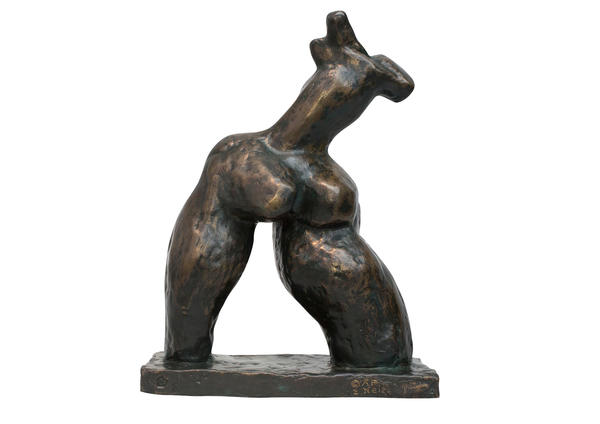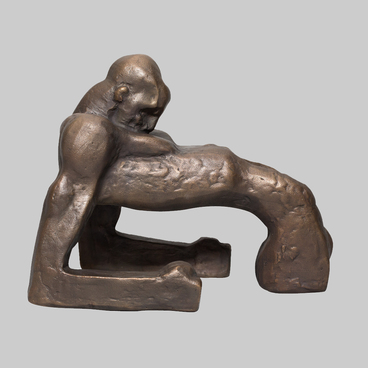Ernst Neizvestny was also seriously injured during the battle. After being wounded (a bullet entered his chest and exploded in his back), he remained lying showing no signs of life, but survived. Only 25 years later he received the Order of the Red Star for this battle.
The sculptor noted that the war forced him to take a fresh look at art. The main correlation at this moment becomes the opposition between life and death. The anti-human power of war led to death, crippled fate, was an alien element in the living.
The sculpture Step vividly expresses suffering, pain and stamina, by focusing on which the sculptor wanted to give it an increased expressive power that can shock the viewer. The unnatural bend of a soldier’s body emphasizes excruciating pain, both physical and mental. The human body appears to be in a deformed shape: a small torso, a huge basin, unnaturally powerful legs are set wildly apart.
The viewer feels the inhuman effort with which a huge leg rises, as if stuck in a quagmire and destructive mud. To take the necessary step, the torso leans back as much as possible. It is extremely difficult for the soldier to take this step, but he does everything in order to move forward. The sculptor shows human stamina and strength that help him overcome obstacles in difficult wartime.
In the book of John Berger Art and Revolution. Ernst Neizvestny and the role of the artist in USSR there is a quote of Ernst Neizvestny about the war: ‘My war <…> began in early childhood and never ended. I always felt at the forefront. Now I have reached the point where I feel really good only when I experience stress.’




